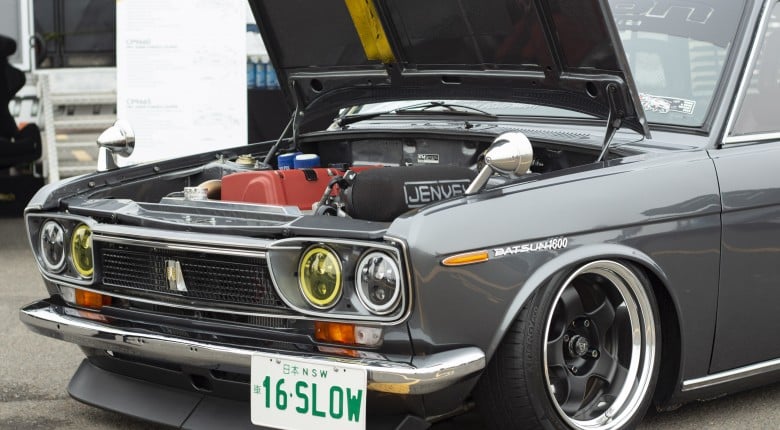Few modern motors can match Honda’s K series when it comes to popularity, tunability, and robustness — especially in the world of engine swaps.
In this article, you’ll learn everything you need to know about the 2.4-litre K24 and all its various iterations. This is a motor often regarded as the best four-cylinder ever made, so let’s find out why.
If you’re more interested in the smaller K20 variant, you’ll find a separate article dedicated to it here.
In this article you’ll find:
- History of the K24
- Why do people love the K24?
- Where can you find the K24?
- What’s the best K24?
- Pros and cons of the K24
- Tuning a Honda K24
- Reflashed Factory ECU or Aftermarket Standalone for a Honda K24?
- K24 engine alternatives
- Getting the most from your K24
A Brief History of Honda’s K24 Engine
Honda’s B-series four-cylinder VTEC engines, which first arrived in the late eighties, reached legendary status over their production run lasting 13 years. They powered some of Honda’s greatest 90s vehicles — most importantly the EF Civic and CRX, EG and EK Civics, and DA and DC Integras.
These motors introduced Honda’s famous VTEC (Variable Valve Timing and Lift Electronic Control) system to the world and although examples like the B16B And B18CR powering the Civic and Integra Type R were well universally loved, Honda knew it had to evolve, even if it was clearly the dominant player in the naturally aspirated four-cylinder game at the time.
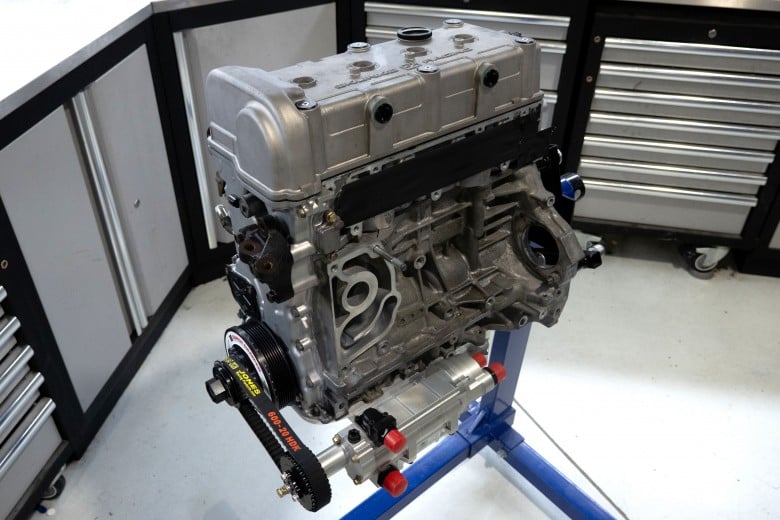
With new versions of the Integra and Civic coming in 2001, a completely new motor was needed, and it had to be better than the B series it was replacing in every way. This resulted in the K20A — a high-revving, technologically advanced two-litre motor that was more than up to the task and quickly became a fan favourite thanks to its strength, reliability, and performance.
Not long after, Honda announced a big brother to the K20 in the K24, a very similar motor with 400 extra ccs of capacity. This made for a torquier, more linear motor that was better suited to bigger vehicles like the new CL9 Accord sedan and CM2 station wagon.
Although the highest spec Accord, the CL7 Euro R actually ran a K20A boasting 20 more horsepower, ‘lesser’ versions used the K24A that produced substantially more torque, much lower in the rev range (168ft-lb at 4500rpm vs 152ft-lb vs 6000rpm).
Initially, there were two versions of the K24 available in the Japanese market — High Performance and Eco. This more economy-focused motor ran lower compression at around 9.7:1 and VTEC on the intake side only, making somewhere around the 160hp mark, whereas the High-Performance version pushed around 200hp and a compression ratio of 10.5:1 or 11:1, depending on the application. It also utilised Honda’s new and improved iVTEC system, which you’ll learn more about soon.
This first iteration of the K24 powered some of Honda’s bigger vehicles within the Japanese domestic market — most importantly the extremely well-received CL Accord Euro and RB Odyssey platforms in both High Performance and Eco iterations. The latter economy version also powered everything from the Stepwgn, Elysion, and Edix people movers to the ubiquitous CR-V crossover SUV.
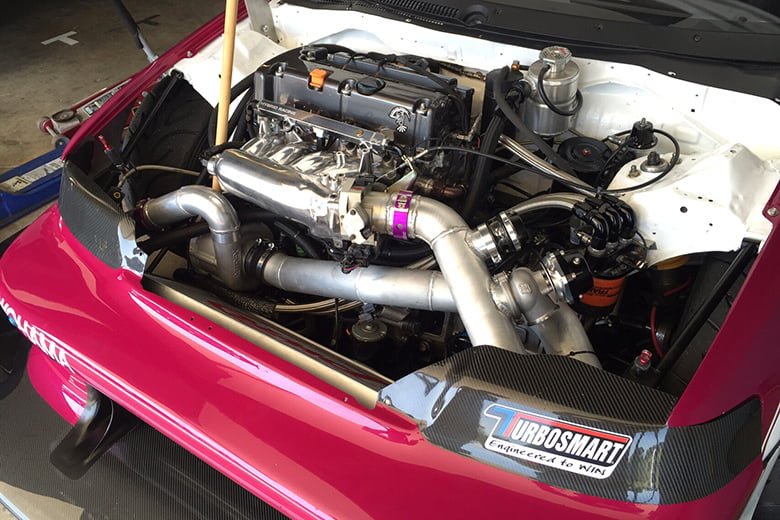
Interest in the bigger K24 began to rise as the K24A2 (US) and A3 (EU, AUS, and NZ) found its way into the international market into enthusiasts’ hands via used car lots and junk yards. Due to the modular nature of the K series, Honda fans quickly worked out that many parts could be changed and a hybrid motor built from K24 and K20 parts quickly became the go-to for big-power, high-performance builds — whether that be in Hondas or transplanted into everything from Mazda Miatas and RX-8s to Ferraris.
In Japan, the last traditional performance-focused K24 ceased production in 2013 with the discontinuation of the RB3 Odyssey Absolute. Stateside, the 2012-2015 USDM Civic (FG6/FB4) K24Z7 and 2013-2015 Acura ILX (DE1) kept the dream alive with a K24Z7 up until 2015.
Since 2013 an “Earth Dreams” direct injection version of the K24 (designated the K24W) has been in production, powering a range of mid-size Hondas. It is still in production today, powering both JDM and USDM versions of the Odyssey people mover.
Why Do People Love The Honda K24?
Initially, it was the smaller K20A powering Honda’s Type R and Euro R products that got all the attention, however, the new K24 began picking up steam when enthusiasts saw its potential as a bigger capacity motor that could hold more power and torque with the right modifications.
This interest ramped up considerably once the K24A2 showed up in the US market under the bonnet of the Acura TSX in 2004, as well as a slightly less powerful K24A3 destined for Europe, Australia, and New Zealand.
It quickly became obvious that many parts between the K series motors were interchangeable, and this meant that although the K24 heads were decent enough, they could be swapped out for the god-status K20A head with fairly minimal fuss, creating what's known as a "Frankenstein" or "Frank" motor.
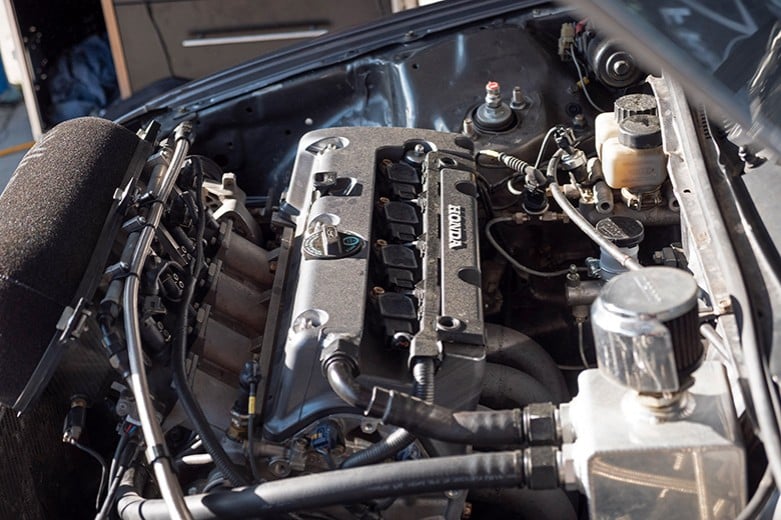
This started a frenzy of activity in the aftermarket tuning industry as builders began piecing together builds using the bigger K24 block and the better-flowing K20 head. It wasn’t long before the 1000hp barrier was broken, and the floodgates opened as enthusiasts all over the world cottoned on to how good these motors were in both stock and highly modified form (or anything in between).
This has created a large industry of performance parts for the K series motor, resulting in it being one of the best-supported motors in the world.
Like the K20, the K24 is capable of putting up with plenty of abuse and has always enjoyed a reputation for strength and reliability. In stock form, it’s certainly not as “hardcore” as the smaller motor with its lower rev limit and less-optimised head, however, it does produce considerably more torque, and at a lower point in the rev range. This makes it an excellent choice for street car builds that don’t need or want to live their lives above 8000rpm.
Of course, one of the biggest (if not the biggest) drawcard of this motor is Honda’s i-VTEC system, which is an improvement on the much-loved VTEC system found in the earlier B and H series motors. I-VTEC adds continuously variable cam control to the intake cam, meaning that the cam position can be advanced or retarded while the engine is running in order to optimise the cam timing to the current engine speed and load.
The result is a much wider power band than what the already excellent VTEC system could achieve on its own.
Abundance is another reason these motors are so popular. This isn’t some boutique, low-production-run piece of exotica — the K24 was produced in its hundreds of thousands, and although, sure, a good proportion of these aren’t the high-performance K24A or K24A2, that doesn’t mean they aren’t just boat anchors, as they can still be used as the basis for a high-horsepower build using aftermarket parts.
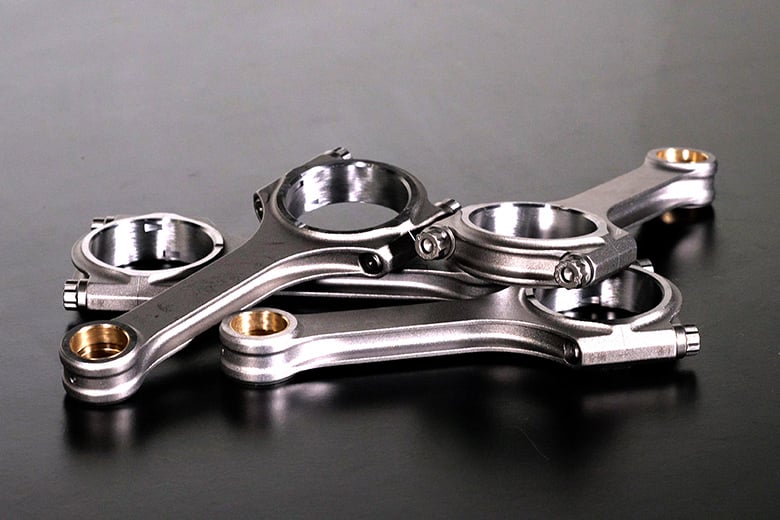
Speaking of, the K series is easily one of the best aftermarket-supported engines in the world. Everything from basic intake and exhaust systems to near-indestructible forged internal components and complete swap kits for a host of different vehicles are readily available off the shelf — you can even pick up billet heads and blocks if you want to go crazy.
This, along with the fact that the path to power is very well-trodden and documented with these motors, makes working with the K series way less of a headache than other motors that don’t enjoy the same support.
The K24 is compact — if quite tall — and incredibly versatile, making it the ideal engine swap candidate for most types of projects — anything from a stock NA swap into a small classic car to an absolute monster turbo build like what can be found in Mike Burrow’s original Ferrari 308 build. Just be aware of height constraints as you may find yourself cutting holes in your hood once the motor is in place.
Where Can You Find Honda K24 Engines?
In this list, we’ll focus on the high-performance variants of the K24. There are a lot of everyday Hondas using the economy versions of these motors, which are the K24A (economy), K24A1, K20A4, K24A8, K24Z1, K24Z2, K24Z4, K24Z5, and K24Z6.
K24A
10.5-11:1 CR, 187-203hp at 8000 rpm, 168-171 lb-ft at 4500 rpm, 7200 rpm rev limit.
- 2002-2008 JDM Accord (CL9/CM2)
- 2008-2013 JDM Accord (CU2/CW2)
- 2003-2008 JDM Odyssey Absolute (RB1, RB2)
K24A2
10.5:1 CR, 197-205 hp at 6800 rpm, 164-166 lb-ft at 4500 rpm, 7200 rpm rev limit.
- 2004-2005 USDM Acura TSX (CL9)
- 2006-2008 USDM Acura TSX (CU2, CW2)
K24A3
10.5:1 CR, 190 hp at 6800 rpm, 171 lb-ft at 4500 rpm, 7300 rpm rev limit.
- 2005-2006 EUDM/AUDM/NZDM Accord Euro (CL9/CM2)
K24Z3
10.5-11:1 CR, 190-201 hp at 7000 rpm, 162-172 lb-ft at 4300-4400 rpm, 7200 rpm rev limit.
- 2008-2012 USDM Accord (CP2/CS1)
- 2008-2013 JDM Odyssey Absolute (RB3, RB4) Note - this particular motor is stamped ‘K24A’ for some reason, despite being a K24Z variant.
K24Z7
11:1 CR, 201-205 hp at 7000 rpm, 170-174 lb-ft at 4400 rpm, 7200 rpm rev limit.
- 2012-2015 USDM Civic (FG6/FB4)
- 2013-2015 Acura ILX (DE1)
What’s The Best Honda K24 Motor?
‘Best’ is always a subjective term, and what is going to suit your needs best might not be ideal for someone else’s project — so this is a difficult question to answer.
That being said, if you’re planning on picking up a K24 and leaving it internally stock, you can’t go wrong with either the JDM K24A found in the CL9 and CU2 Accord as well as the RB1/2 Odyssey, or the K24A2 as found in the USDM CL9 Acura TSX. These JDM and USDM motors are nearly identical.
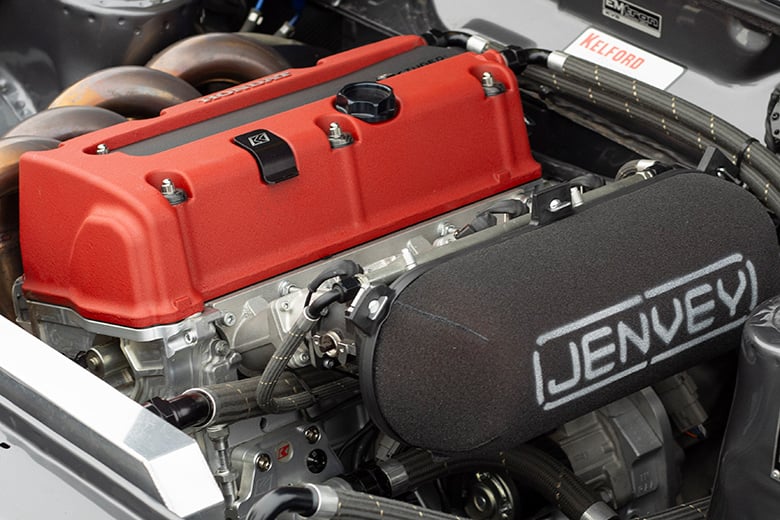
Now, where it gets a little murky is that there are actually two versions of the K24A2, depending on what year TSX it came from — the ‘06-‘08 TSX’s K24A2 had a number of improvements, including a longer duration intake camshaft, 1mm larger intake valves, a larger plenum (the same as JDM K24A), bigger throttle body and slightly beefier rods.
This makes it the one to get if you’re living stateside — either way, though, with fairly basic bolt-ons and a reflash, 220-240hp at the wheels is entirely possible. Swap out the original head and weak oil pump for K20A versions, and you’ve got yourself a 300hp screamer NA, or anything up to 500hp force-fed.
Regarding the oil pump conversion, it's worth noting that this isn’t a direct bolt-on, requiring some trimming of the UMP body to clear the cradle, and an oil feed in the cradle needs to be blocked.
In recent years, later-generation K24Z motors (as fitted in some USDM Accords and Civics) have also become a viable option. These motors, while newer, have less power potential being limited to around 200hp at the wheels naturally aspirated after bolt-on mods — but if that’s all you need, then these motors will be a perfect choice due to their abundance and cheap price.
If you’re planning on a more serious build with aftermarket internals, then your options open up much wider. Using an economy-focused donor motor is a smart move here, which, once built up with good rods and pistons, and ideally fitted with a K20A head and oil pump, will make bulk power on boost.
Pros & Cons Of The Honda K24 Engine
Pros
- Great aftermarket support
- Easy availability and low cost
- Compatible with parts from K20 (eg: head and oil pump)
- Full swap kits are available for many platforms
- Extremely robust
- More torque and power lower in the rev range than the smaller K20
- Honda’s i-VTEC system
Cons
- Head doesn’t flow anywhere near as well as K20A
- Factory engine mount degradation over time causes excessive vibration
- Front crankshaft oil seal is prone to leaks
- Open deck block
- Timing chain tensioner wear
- Stock oil pump limits performance potential due to cavitation issues
- Factory oil sump will need a baffle upgrade if sustained track use is on the cards
- Height may cause fitment problems in smaller vehicles
Tuning a Honda K24
Let’s get this out of the way first — you’re likely going to come across K24s online making huge power on stock internals, well outside their extensively documented capabilities. Good for them, but just be aware that these engines are not the norm.
They’re either driven very lightly unless it’s for a pull on the dyno, or they’ve just been lucky so far and are probably on borrowed time. Sure, it can be done, but for how long? And do you really want to be constantly wondering when your motor is finally going to let go?
Secondly, as with any build, it's also important to remember that a motor’s strength and reliability is only as good as its tune — if in doubt, master the skills yourself and perform your own tuning work.
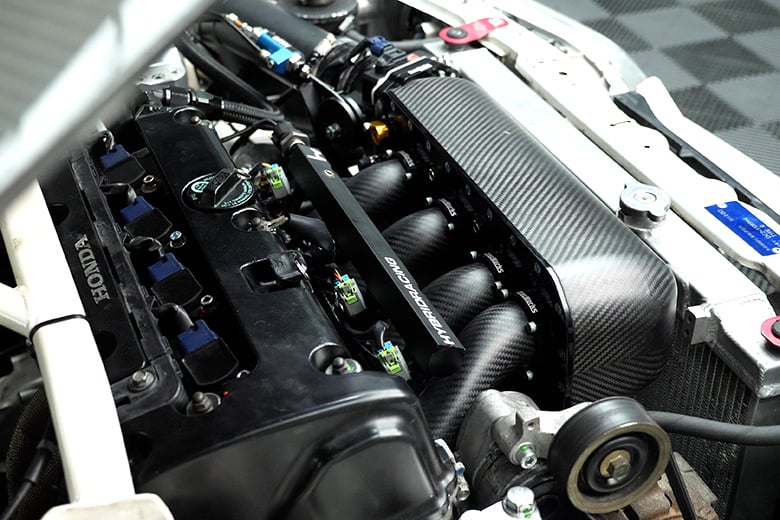
For basic bolt-ons on a K24A2 or similar, your best bang for the buck is going to be the classic quality cold-air intake, aftermarket exhaust manifold and 3-inch exhaust combo, as well as an ECU remap using something like Hondata’s popular K-Pro. This setup should see somewhere around 220-230hp at the wheels.
If you’re looking to get more serious with a naturally aspirated build, then it’s time for a swap to a K20 head to create a "Frank" motor — ideally either from the JDM K20A High Performance (EP3, DC5, CL7) or the USDM K20A2, often referred to as the “Type S” head. Pushing it further still, the stock camshafts can be swapped out for something more aggressive, which will require stiffer valve springs and retainers (if you’re going with double valve springs). These are excellent heads, however can still see drastic improvements with a good port and polish job from an experienced Honda specialist.
One key modification required for successful K24 tuning is a swap from the factory 25-degree VTC intake cam gear to a 50-degree version from the Type-R K20A. This allows for a wider range of timing adjustments, making for much improved mid-range power capabilities.
On the intake side, individual throttle bodies can be a great upgrade at this level, though it’s certainly not a case of just throwing on a set and seeing big gains — they require a fair amount of thought and matching to the engine build to see a worthwhile gain. Check out this article covering ITBs in detail for more information.

With the right selection of pistons, rods, fuelling, and a K20A/F20C oil pump and aftermarket sump, you’ll be pushing over 320hp with plenty of torque and an 8000+rpm redline. It's around this point that a set of more aggressive cams would make a lot of sense. Companies like Skunk2 and Drag Cartel make great drop-in options that are excellent bang for your buck.
If you’re looking to go further and really push the limits, in all motor drag racing circles 420+hp will put you at the front of the pack — but this is a very serious, big money, billet everything, 15:1 CR race-fuel-only type of build, so don’t expect to be cruising the street with a K24 this highly strung.
Heading down the forced induction route is admittedly a much easier way to make power — with the right size turbo, these motors can reliably support around 450hp at the wheels internally stock.
Increasing power further than this is going to require aftermarket rods and pistons, which should see anything up to 600-700hp at the wheels before running into longevity problems.

Going beyond this point is going to require aftermarket sleeves, with Darton being the main player in this field. It’s absolutely critical that these are installed using a professional machinist with CNC equipment and significant experience. With these sleeves installed, the right parts, a properly sized turbo and a good tune, it’s entirely possible to see upwards of 1200+hp out of a well-built K24.
If you’re starting with an economy-focused K24 block, just be aware that it won’t have oil squirters for the pistons, and the oil pump won’t be up to the task — many builders actually ditch the squirters, but the jury is out on whether that’s a good idea or not so it pays to ask around for some further opinions and come to your own conclusions.
For the pump, the most common solution is swapping it out for a K20A or A2 version, or, if you’re looking for really high revs, an F20C pump from an S2000.
Reflashed Factory ECU or Aftermarket Standalone For a Honda K24?
If you’re going all-out on a K24 build, you’re probably wondering at what point you should ditch the factory ECU and go standalone.
The reality is, if you want to stick with the factory ECU and reflash using something like Hondata’s K Pro package you can, no matter how much power you’re aiming for.
There is a caveat to this, though.
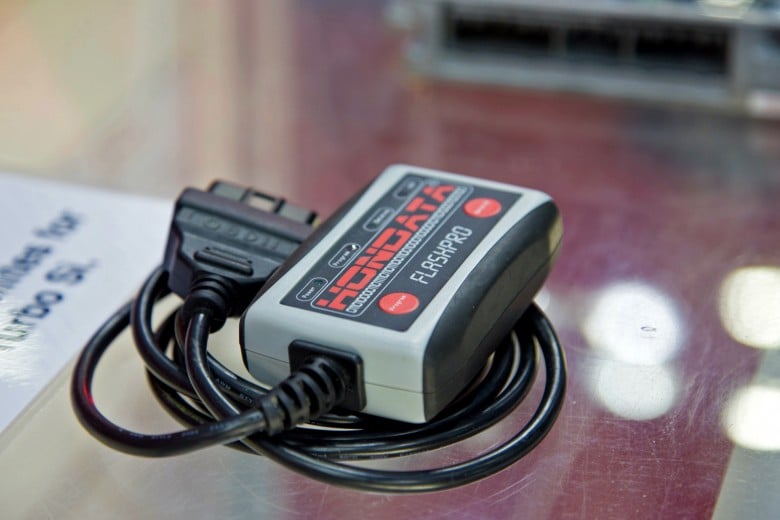
While software like the K Pro is incredibly impressive and can do nearly everything you need it to (that includes data logging, flat shifting, launch control, boost control, flex fuel, and more), due to the way Honda’s tables work, reflashing a stock ECU K24 is clumsier and more complex than an aftermarket standalone.
The more extreme you go, the more challenging it's going to be to perfectly tune it on a reflashed stock ECU.
So who should consider getting rid of the factory Honda ECU and going standalone on their Honda K24 build?
- If you’ve got a motor and no factory ECU to go with it, this could be a simple option that’ll make life easier in the future.
- If you’re building a serious race car, something more motorsport-orientated makes sense for both simplicity and future proofing — especially if you’re going to run a sequential gearbox like a Holinger, as flatshifting can be challenging to get right on a reflashed stock ECU.
- If you’re planning to run individual throttle bodies. Again, while it is possible to tune ITBs on a reflashed factory ECU, it’s not pretty and is much less of a headache on a standalone.
Honda K24 Engine Alternatives
Depending on your particular use case, there are some decent alternatives out there if, for whatever reason, a Honda K24 isn’t going to work for your project:
- Honda K20 (2.0 litre NA four-cylinder)
- Nissan SR20VE (2.0 litre NA four-cylinder)
- Mitsubishi 4G63 (2.0 litre turbocharged four-cylinder)
- Ford Ecoboost 2.3 (2.3 litre turbocharged four-cylinder)
- Volkswagen EA888 (2.0 litre turbocharged four-cylinder)
- Toyota 3SGE Beams (2.0 litre NA four-cylinder)
Get The Most From Your Honda K24 Engine
So you’ve decided the K24 is going to be perfect for your new build. The question is, where should you start?
The first port of call should be the range of engine building and tuning courses.
If you’re looking to build a fresh K24 (factory-spec, a fully-built motor, or anything in between) start with the Engine Building Fundamentals course, followed by Practical Engine Building. This will take you through everything you need to know in order to properly build a motor you can trust.

The smart play here would be picking up the Engine Building Starter Package, which includes these two courses plus a course dedicated to degreeing cams all for a healthy discount.
Once you’ve built your K24, it’s time to tune it.
The best move here is to start with the EFI Tuning Fundamentals and Understanding AFR (air-fuel ratio), which will set you up with the foundation knowledge you need.
If you’re going to stick with the factory ECU and reflash it, the next step is going to be the Practical Reflashing course — especially as it includes a worked example tuning a very similar K20A using Hondata’s K Pro software.
If you’re planning on using an aftermarket standalone ECU, then check out the Practical Standalone Tuning course instead.
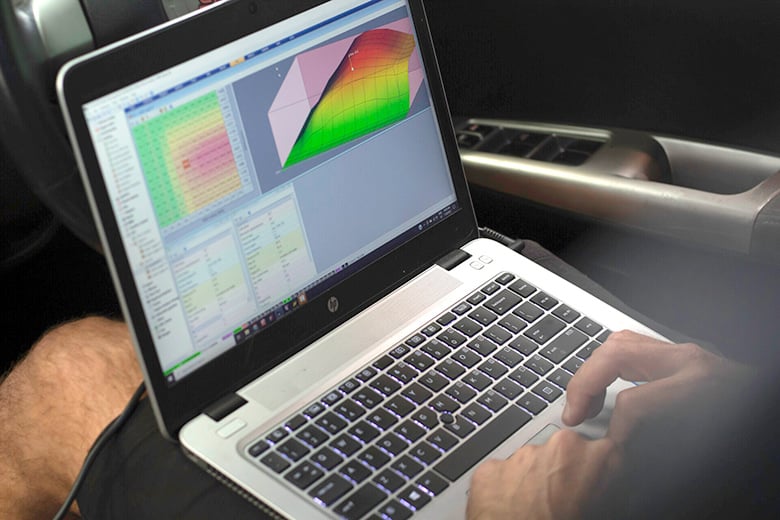
All these courses are bundled together at a discounted price in the Tuning Starter Package.
Lastly, it’s also worth looking into the Variable Cam Control Tuning course, which focuses on getting the most out of Honda’s iVTEC and similar systems.
Throughout this process, if you ever find yourself stuck, you’ll have access to our support forums, where you can post any questions you’ve got and get answers from tutors and the wider tuning community.
The Honda K24 is going to go down in the history books as one of the greatest four-cylinders ever made and it only makes sense to pick one up now and have a play while they’re still plentiful. With a well-built engine, the right modifications, and a good quality tune, whatever performance goals you have in mind will be achievable with the K24!
